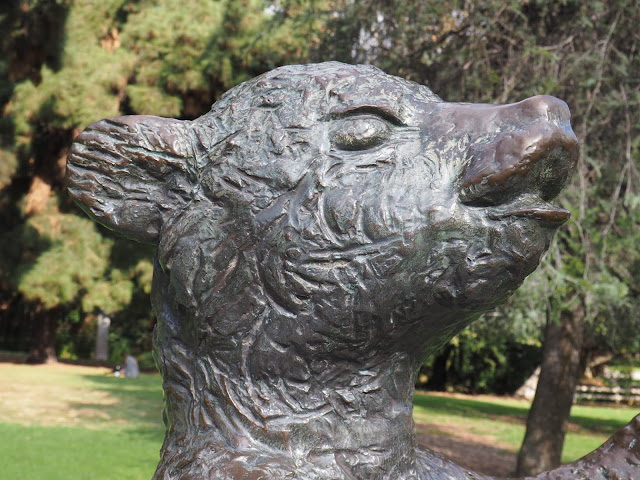Sometimes you do your research well in advance, plan your itinerary, and then you do your walking. Sometimes it’s the other way round – you go for a walk, see lots of stuff, and you get home and thendo the research, in arrears as it were.
A little of both was involved in my recent drift through a very small part of Highland Park in northeast LA. I was part of a reading there at the weekend at a place called Bookshow – a bookshop-cum-tarot-reading salon (yes really). I had never been to Highland Park and it didn’t really register on my mental map of Los Angeles, which was one of the reasons I wanted to go there.
Wikipedia said it is “currently inhabited by a variety of ethnic and socioeconomic groups,” which I suspected might be code for “hang on to your wallet, hipster.” But Time out said. “Figueroa Street has found itself as another source of increasing pedestrian activity, thanks to its Metro Gold Line stop,” which sounded better.
North Figueroa is the main drag through Highland Park, and Figueroa is one heck of a street running for some 20 miles, and from time to time (though not currently) it’s been part of Route 66. I guess I covered perhaps three of those miles in a meandering sort of way, to warm up for the reading.
The area was, I think you’d have to say, “diverse.” On the one hand there were quite a few dodgy-looking places to cash checks and get loans, some garages where you wouldn’t feel all that happy about leaving your car, and the odd Botanica and Ferreteria.
Then there were hipster bars, record shops and places selling midcentury chairs and coffee tables at eye-watering prices.
And most spectacularly, there was Chicken Boy, who I’d heard about over the years but never seen, and I knew there was quite a backstory.
Chicken Boy – a human with a chicken head. customized from a fiberglass model of Paul Bunyon - first appeared in the 1960s on top of a fried chicken restaurant in downtown Los Angeles. The restaurant owner died and the model was taken down, and it was acquired by Amy Inouye – a book designer and art director. It went into storage for twenty odd years, eventually being resurrected on the roof of Inouye’s “Future Studio,” where for planning purposes it’s considered an "art installation," apparently.
It was impressive, but so were the two lions on top of Devon Glass and Mirror. It’s hard find the angle that gets both lions in the picture.
Research shows that they get painted in different colors from time to time. It also shows that Devon Glass and Mirror receives some poisonous online customer reviews.
One of the minor things to notice (and these might form part of Nicholson’s ongoing “guide to the ground”) are the mosaics in the sidewalk:
That actually says N. Avenue 60, not N. Avenue Go, which is how I first read it. There are 14 mosaics along this stretch of Figueroa, and I thought they looked suitably patinaed and historic but I was wrong about that. They were installed just this year, designed by Wick Alexander, and funded by a $149,000 grant from the Los Angeles City Department of Transportation. They were a long time coming since there were delays with permits and then the tiles had to be tested to ensure they were waterproof and non-slip. But they got there in the end.
Other things that caught my eye - Frida was there (she gets everywhere):
There were cacti for sale (always a plus in any neighborhood):
And there was this concrete tree by the station:
Yes, yes, I know this is all madly superficial. I shall go back to Highland Park, I swear, and get involved in some deep topography, the way you do.





















































